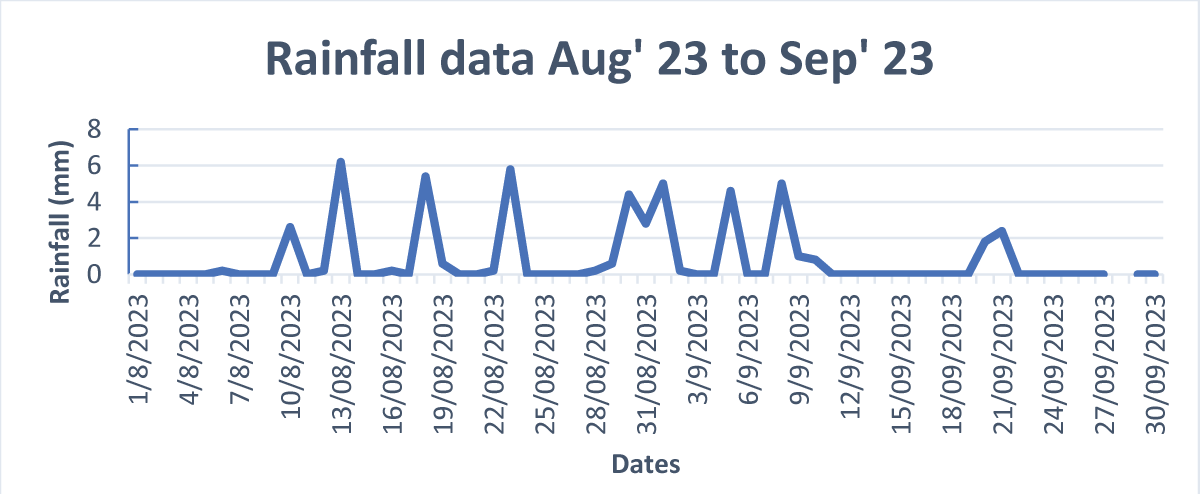Impact of Rainfall on Water Quality Parameters in Recreational Lakes in Heidelberg, Germany
Introduction Precipitation can significantly influence the water quality of lakes and other water bodies, impacting their ecological health and suitability for recreational activities. This post explores the findings from a recent study on how rainfall events affected various water parameters in recreational lakes around Heidelberg, Germany. The study, conducted in August and September 2023, sheds light on changes in pH levels, dissolved oxygen, nutrient concentrations, and more.
Key Effects of Rainfall on Water Quality
- pH Levels: The study found that rainfall had a dilution effect on the pH levels in the lakes, generally leading to an increase. This aligns with the observed behavior where rainwater, mixing with lake water, can neutralize acidic or basic conditions.
- Dissolved Oxygen (DO): Rain-induced surface turbulence facilitated the integration of atmospheric oxygen, which increased DO levels in most lakes. This enhancement of DO is beneficial for aquatic life, contributing to the overall health of the ecosystem.
- Nutrient Concentrations: Nutrients like nitrates and phosphates exhibited mixed results. Some lakes saw an increase in concentration due to urban runoff, while others experienced a decrease attributed to the dilution effect. This variability points to the unique characteristics of each lake, such as water source and surrounding land use.
- Heavy Metals: The study reported a decline in zinc and copper concentrations post-rainfall, indicating dilution effects and no significant introduction of these metals through runoff or sediment transport.
Factors Influencing Water Quality Variability The impact of rainfall varied across the five lakes studied, influenced by factors such as:
- Geological and Environmental Conditions: Differences in geological substrates and land use around the lakes played a role in how each body of water responded to precipitation.
- Lake Characteristics: Size, depth, and isolation levels affected how quickly and to what extent rainwater mixed with existing water, influencing the retention and distribution of pollutants.
- Absence of Point Source Pollution: The study noted that no direct discharges from wastewater treatment plants or industrial sources were detected, which contributed to the natural response of the lakes to rainfall without additional pollution input.
Statistical Analysis and Correlations The study utilized ANOVA and correlation analysis to establish significant relationships between water parameters. Findings highlighted that:
- Positive Correlations: DO levels correlated positively with pH, while redox potential was linked to turbidity and conductivity.
- Inverse Relationships: Redox potential and pH showed an inverse correlation, suggesting that higher redox potential could lead to lower pH levels. Similarly, heavy metals like copper influenced pH through oxidation processes.
Conclusion The results underscore that rainfall generally improved the water quality in Heidelberg’s recreational lakes, provided there were no nutrient or sediment influxes. The observed increase in pH and dissolved oxygen levels, alongside reduced concentrations of heavy metals, supports the idea that these lakes are resilient to natural precipitation without significant pollution. These findings emphasize the importance of regular monitoring to understand and maintain the ecological balance in recreational water bodies.
Tags: Water Quality, Rainfall Impact, Recreational Lakes, Heidelberg, pH Levels, Dissolved Oxygen, Nutrient Concentration, Environmental Science

Precipitation details of the five study sites in Heidelberg, Germany.
